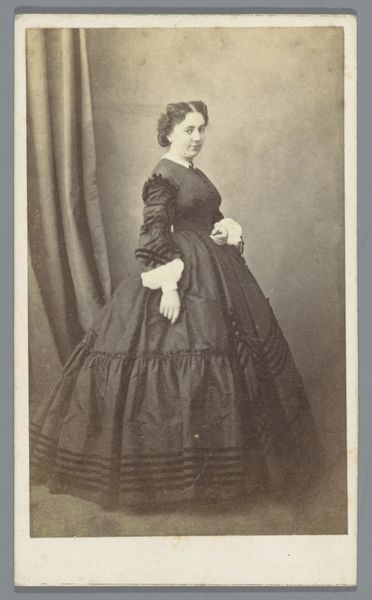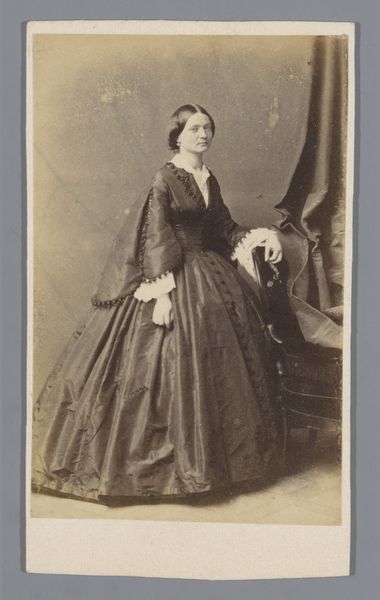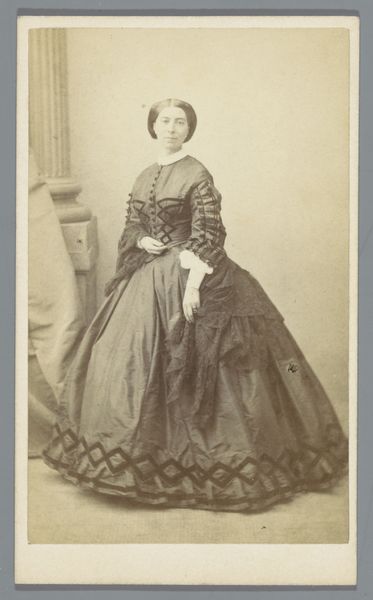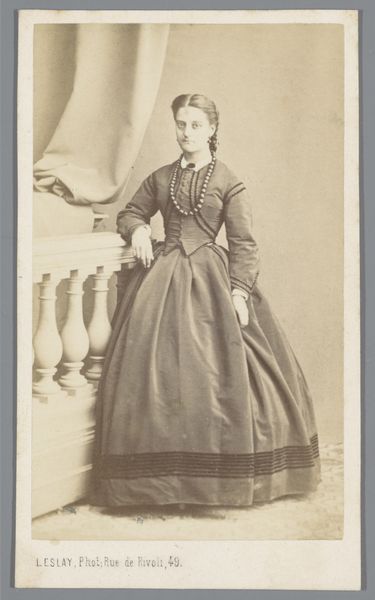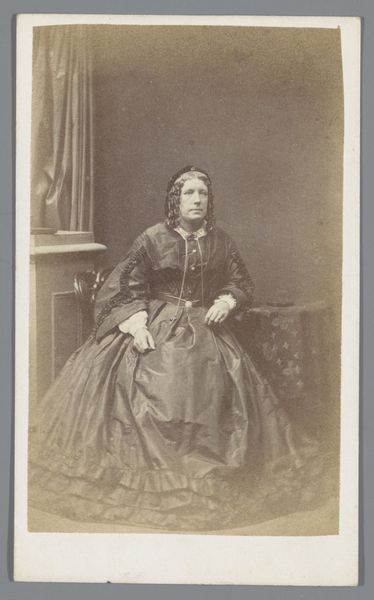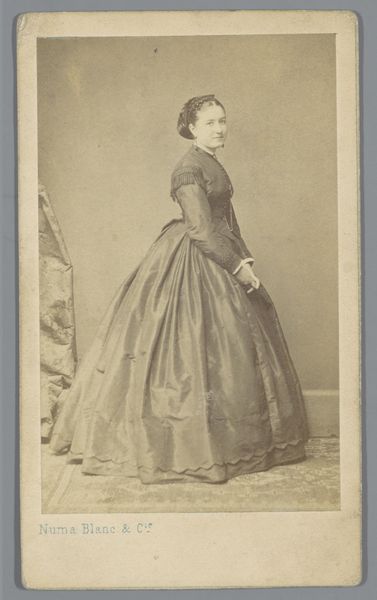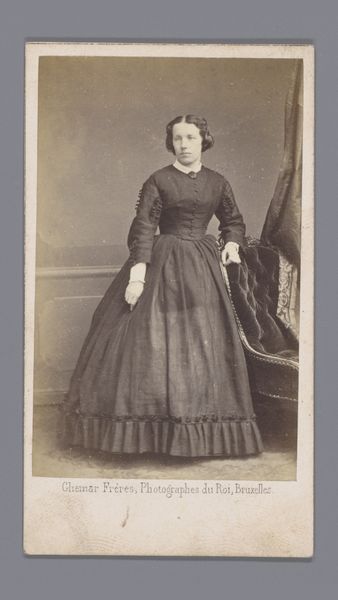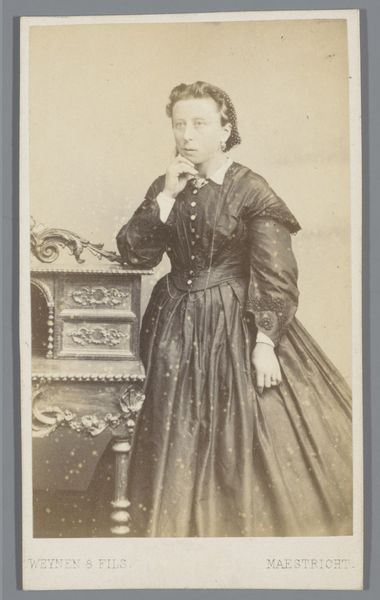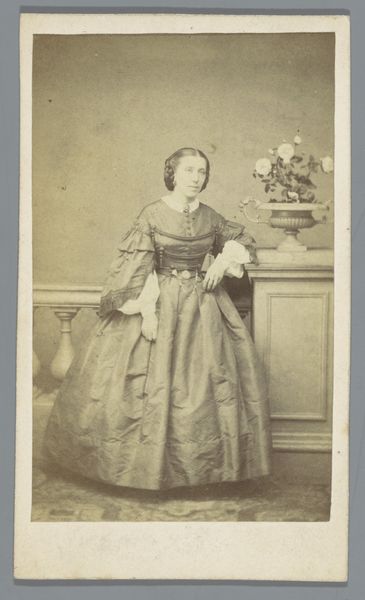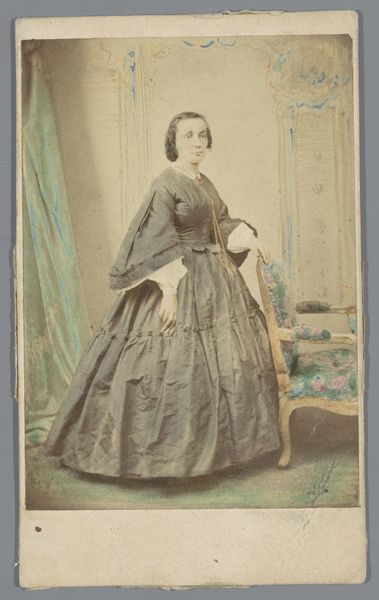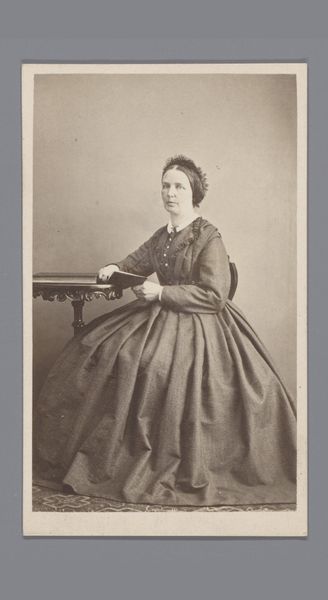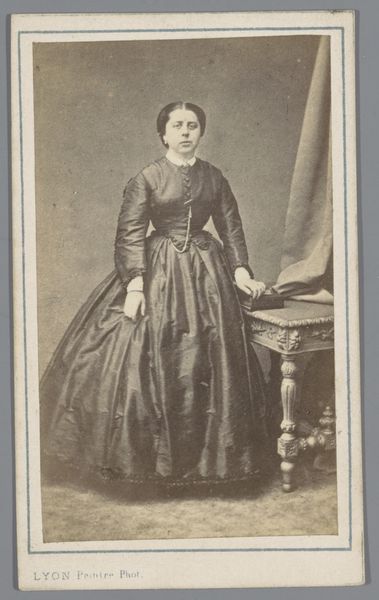
Dimensions: height 104 mm, width 61 mm
Copyright: Rijks Museum: Open Domain
Editor: Here we have a photograph entitled "Portrait of an Unknown Woman, Standing Beside an Armchair" dating from 1850-1865. It's a gelatin silver print by N. Blanc et Cie. The woman's posture is quite formal, and there’s a melancholic air to the whole composition. How do you interpret this work, thinking about its place in history? Curator: The image is certainly staged, very much a constructed reality of its time. What we're seeing here is less a capture of unadulterated reality and more an articulation of social aspirations. Consider the democratization of portraiture that photography enabled. Suddenly, having one's likeness preserved wasn't exclusive to the elite who could commission painted portraits. Who was being represented here and what were the politics of that imagery? Editor: So, it was about participation in the popular culture? Curator: Precisely! The rising middle class sought visibility, seeking to emulate aristocratic portraiture. Photography studios like N. Blanc et Cie catered to this desire. What signifiers of wealth and status can we see? Editor: Well, the ruffled dress looks pretty elaborate, and then there’s the draped curtain and fringed armchair suggesting a comfortable domestic life. Were there many women photographers? Curator: Initially it was very uncommon. Photography presented opportunities for both genders, however historical social norms presented many practical barriers for women to set up professionally or to receive sufficient patronage to succeed. Editor: That's fascinating. Thinking about the subject of the photo, she likely knew how much the photograph said about her social position. It gives me a new perspective. Curator: Indeed! It's about recognizing the photo as an object operating within a specific set of social circumstances and power relations, more than just a mere likeness. Editor: I never really considered the democratizing element and the socio-political implications of early photography like this before! It's given me lots to reflect on.
Comments
No comments
Be the first to comment and join the conversation on the ultimate creative platform.
